Recently, Bill has been experimenting with a vintage Graflex RB Series B Single Lens Reflex (SLR) camera – and taking some excellent photos with it. You may have read a little bit about Bill’s camera in a blog post Jeff Revell wrote after Bill brought the camera on the Georgetown Photowalk last month.
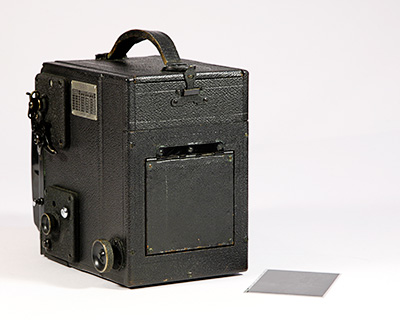
(c) 2008 William Lawrence
We’re not sure when the camera was made. Graflex produced this model camera between 1923-1951. Our guess is that our camera is from later in the run. Folded up, as in the photo above, it looks somewhat like a box camera. However, the top opens and the lens compartment open up as below, to give you an SLR with a top viewfinder in the “chimney”.
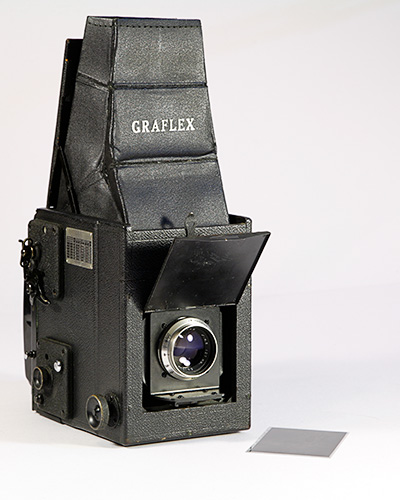
(c) 2008 William Lawrence
You can see the Kodak Ektar lens (made in 1956, at the time one of the premier lens series), backed by a set of bellows that allow focusing by turning the know on the bottom right of the camera. The aperture is set manually, and typically Bill has to focus and compose with the lens wide open, turn the aperture to the desired f-stop, and hope that there is enough light to make sure he has recomposed the scene correctly (he usually doesn’t use this camera with a tripod, but it’s a great hand-held camera).
The camera originally was designed for either 2-1/4”x3-1/4” sheet film, or 120 roll film in a roll film holder on the back. Bill uses roll with a 2-1/4”x3-1/4” roll film holder on the camera. Since this film is still readily available, it makes a convenient format, and the image size is large enough to get a reasonable enlargement from the negative. To give you an idea of the size of the camera, each of the images has a 2-1/4”x3-1/4” negative (cut from a roll of 120 film). A sample negative is next to the camera in the photo.
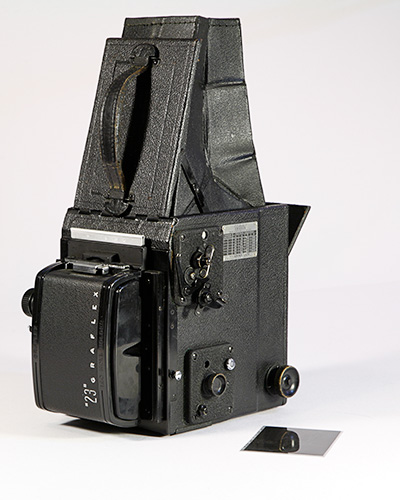
(c) 2008 William Lawrence
This camera is a great “walking around with camera”. While it has a tripod mount, it really is designed to be used handheld. The design forces you to hold the camera against your body, which helps steady it at lower shutter speeds. The lens opens up to f4.5 (they make faster lenses, but this wasn’t too bad for the time), and it is a great camera for shooting low depth-of-field photos by shooting with the lens wide open or close to it. The 127 mm Ektar lens gives a pleasing “bokeh” or appearance of the out of focus areas of the photograph.
Here are some of the photos Bill has taken with his Graflex Series B SLR.
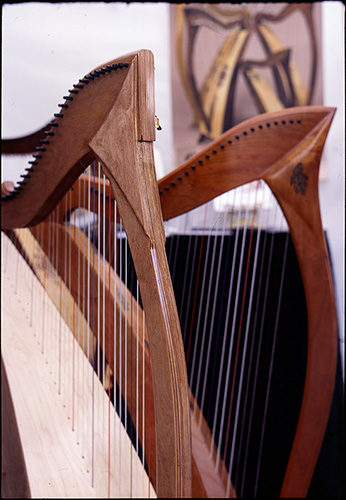 (c) 2008 William Lawrence
(c) 2008 William Lawrence
Bill took this photo of two of the incredible harps from Heartland Harps at a show we were visiting. If you like harp music, be sure to check out Pamela Bruner’s music. I’ve got at least 10 of her CDs – Here Be Dragons is my favorite.
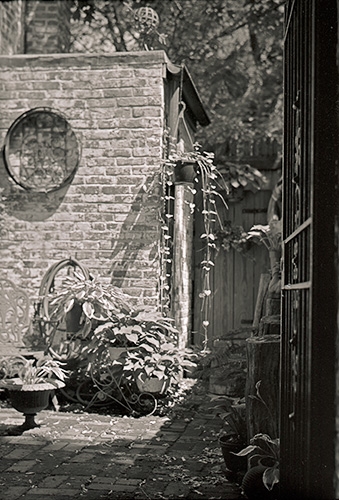
(c) 2008 William Lawrence
Bill took this photo of a garden along the C&O Canal on the Georgetown Photowalk in June.
September 11 Memorial II (c) 2008 William Lawrence
The September 11 Memorial is located on the campus of the National Fire Academy in Emmitsburg, Maryland.
Bill was having so much fun with his Graflex RB Series B SLR Camera that he has gotten two additional Graflex SLR models – both RB Super D SLR cameras. One uses 3 1/4″ X 4 1/4″ film, the other uses 4″ X 5″ film. This past weekend, I gave one of the Super D cameras a try – it was pretty easy to use (and this from someone who went digital in 2000).
You can find more information about the Graflex RB series of cameras at www.graflex.org. Among the documents on the site is a navy manual for the cameras. In case you were wondering – the navy did not think the Graflex SLR cameras were suitable for photographing aircraft carrier landings!
If you have a chance to try one of the Graflex RB SLRs, we highly recommend you give it a try. You may not get an image that is as tack-sharp as the state of the art medium format cameras, but you just might find you get images you are happy with. You will also get some amazing looks and comments from people as you photograph with it!
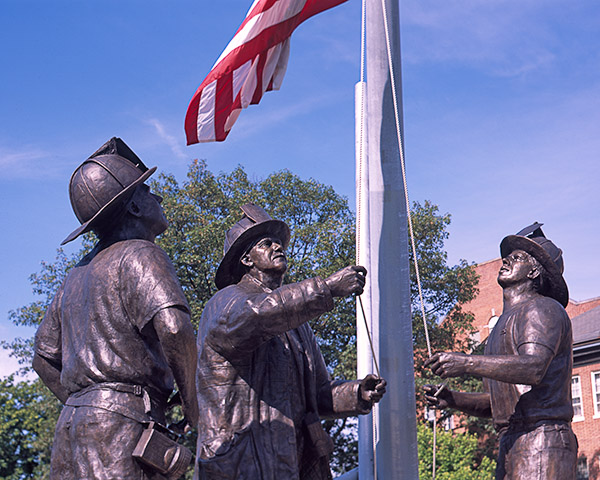
Great post – the link to Graflex.org failed on my side, great images bill has there, I really like the harp shot.
Bill Lawrence’s pictures are a fine example of what a Graflex SLR can do. I just got an identical model (date 1947, with rollfilm back). It’s in good working condition. I’ve been trying it out with Ektar 100 and I’m very pleased. The Ektar 127mm is a great lens and I sure like the 2×3 format.